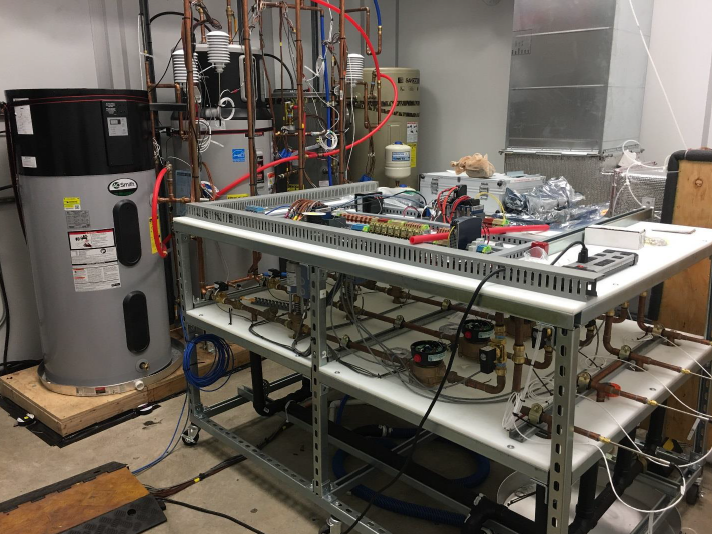 Project Title
Project Title
Lab Testing Heat Pump Water Heaters to Support Modeling Load Shifting
Project Number Codes and Standards PGE 2018_1 Organization PG&E End-use Water Heating/DHW/HPWH Sector Residential Project Year(s) 2017 - N/AHeat pump water heaters have the capability to heat water during off-peak times of the day and store hot water for use during times when the demand for electricity is higher. Utilizing this strategy may provide potential cost savings for occupants by reducing energy use during the highest cost periods under TOU rates and offer the potential for demand flexibility to the utility and customer.
This laboratory-based project, funded by PG&E's Codes and Standards Program, focused on the potential impacts of performing load shifting with HWPHs in California’s Building Energy Efficiency Standards (Title 24, Part 6) and supported simulation model enhancement. The project had three objectives:
- Support a simulation-based study performed by Ecotope and the National Resources Defense Council (NRDC) using Ecotope’s HPWHsim[1] model;
- Demonstrate the feasibility of using HPWHs for load shifting in a laboratory setting; and
- Identify issues that should be addressed to maximize the impact of this control strategy.
This project does not compare HPWHs to other water heating technologies in terms of price, energy savings or reductions in customer utility bills.
Three types of tests were performed on HPWHs from four manufacturers.
Selected key lessons learned included:
- Even under the draw profile with the greatest need for load shifting, all tested HPWHs demonstrated a significant benefit to the builder for compliance with Title 24 relative to an uncontrolled HPWH, reduction in grid stress for the utility, and potential cost savings for occupants by reducing energy use during the highest cost periods under TOU rates.
- Benefits of load shifting increased when switching from a HPWH with 50 gallons to 66 gallons of rated storage.
- HPWH control logic is important to maximize benefits of load shifting. HPWHs favoring the compressor over the resistance element were more likely to obtain significant TDV reductions.
- Strategies designed to improve Title 24 compliance or reduce consumer energy usage during peak TOU rate period can be in conflict with strategies intended to minimize negative grid impacts. For maximum grid benefits, HPWHs must be able to communicate with the utility, and develop load shifting strategies customized to each day based on anticipated load communicated by the utility.
- There is potential for home builders to benefit from specifying HPWHs that have load shifting control capabilities in the Title 24, Part 6 compliance process. When the energy system features are entered into the compliance software (CBECC-Res) used to evaluate whether the home design will achieve a passing score, or Energy Design Rating, the HPWHs with this capability will be given more credit towards compliance than those that do not. CBECC-Res currently does not provide credit for these features. Modifying CBECC-Res to provide an appropriate benefit or credit to builders would encourage industry adoption of load shifting controls.
[1] HPWHsim is Ecotope’s detailed simulation model of HPWHs. It has not been released publicly, and the best way to obtain a copy is by contacting Ecotope directly. The github repository for documentation is available at https://github.com/EcotopeResearch/HPWHsim/tree/master/Documentation
